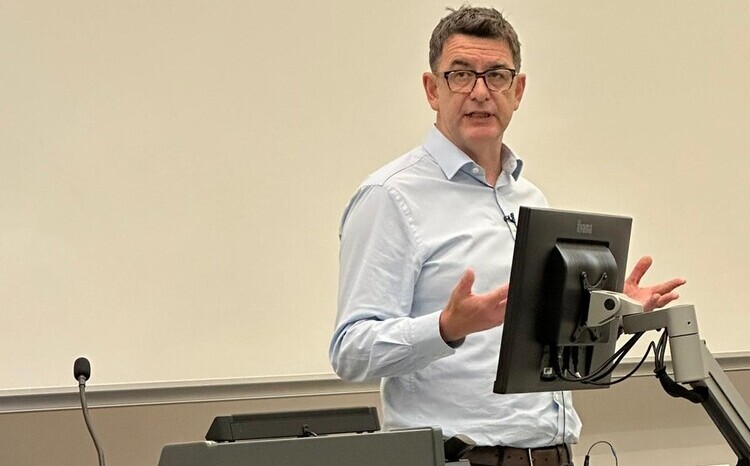Interoperability centre stage in Dallas
- 21 February 2005
Interoperability was the operative word among the nearly 22,000 health IT professionals at the 2005 Healthcare Information and Management Systems Society conference here last week, Neil Versel reports from Dallas.
"Interoperability is the key to achieving the ultimate goal," which is a full electronic health record, explained Dr Carolyn Clancy, director of the US government’s Agency for Healthcare Research and Quality.
But complete EHRs are far off, especially in the absence of standards and a means for US doctors and hospitals to pay for clinical information technology. Independent healthcare organisations in the US also are wary of sharing data with competitors.
"If all we do is digitise health information in its current form, we will have extra space on desktops, but little else," Dr Clancy cautioned. "We need to resist the temptation to act too quickly."
Of health IT, Dr Clancy said, "It’s not a silver bullet. It has to be an evolutionary process, even if it’s a fast evolutionary process."
Technology vendors among the nearly 800 exhibitors at HIMSS are coming to realise the importance of working together toward a common goal, and many took part in first-ever “interoperability showcases” on the conference floor. Attendees could create and manage the flow of patient records across multiple care settings and between healthcare enterprises.
A number of vendors also responded to growing demand to link hospitals with office-based physicians and other ambulatory care settings—and to involve patients in care management.
Cerner Corp., IDX Systems Corp. and Microsoft Corp. all showed off various components of a "personal health record," the patient-accessible component of a complete EHR.
"Patients want information and comfort," according to Pat Sodomka, an executive with the Medical College of Georgia Health System. The health system, a Cerner customer, has been involving patients and their families in the redesign of many of its processes and in April will turn on a Web portal for its patients.
Cerner made a push into ambulatory care last November by acquiring the medical division of VitalWorks, while IDX recently partnered with Primetime Medical Software, a small vendor which feeds EMRs with patient-entered medical history data.
This month, Siemens Medical Solutions, a unit of Siemens AG of Germany, entered into a partnership with NextGen Healthcare Information Systems to sell NextGen’s ambulatory electronic medical records and practice management software along with hospital-based Siemens products. The two companies demonstrated interoperability between their systems at the conference.
Misys Healthcare Systems, a US-based division of British firm Misys plc, launched a Web-based portal called Misys Connect so physicians in private practice, home health nurses and long-term care providers can access hospital records. Misys product specialist Chris Callahan called this a "proof point" for interoperability.
McKesson Corp. also announced a "new focus" on the outpatient environment in its next fiscal year, beginning April 1, with a product called Horizon Ambulatory Care.
New research from HIMSS indicates that nearly two-thirds of US healthcare organisations have plans to implement an EMR within the next two years, on top of the 18 per cent that already have operational EMRs.
But David Garets, president and CEO of HIMSS Analytics, put a bit of a damper on the enthusiasm by labelling the electronic health record the "2005 hype winner."
HIMSS defines an EMR as a system that permits healthcare organisation to keep patient health status without paper, while the more robust EHR is a communitywide, regional or national record, accessible to multiple healthcare providers and to patients themselves. The latter requires interoperability, Garets explained.




